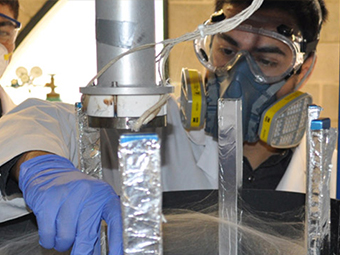Document Type
Article
Publication Date
3-2018
Abstract
Pumping of fluids with precise control is one of the key components in a microfluidic device. The electric field has been used as one of the most popular and efficient nonmechanical pumping mechanism to transport fluids in microchannels from the very early stage of microfluidic technology development. This review presents fundamental physics and theories of the different microscale phenomena that arise due to the application of an electric field in fluids, which can be applied for pumping of fluids in microdevices. Specific mechanisms considered in this report are electroosmosis, AC electroosmosis, AC electrothermal, induced charge electroosmosis, traveling wave dielectrophoresis, and liquid dielectrophoresis. Each phenomenon is discussed systematically with theoretical rigor and role of relevant key parameters are identified for pumping in microdevices. We specifically discussed the electric field driven body force term for each phenomenon using generalized Maxwell stress tensor as well as simplified effective dipole moment based method. Both experimental and theoretical works by several researchers are highlighted in this article for each electric field driven pumping mechanism. The detailed understanding of these phenomena and relevant key parameters are critical for better utilization, modulation, and selection of appropriate phenomenon for efficient pumping in a specific microfluidic application.
Recommended Citation
Hossan, M.R., Dutta, D., Islam, N. and Dutta, P. (2018), Review: Electric field driven pumping in microfluidic device. ELECTROPHORESIS, 39: 702-731. https://doi.org/10.1002/elps.201700375
Publication Title
ELECTROPHORESIS
DOI
10.1002/elps.201700375



Comments
© 2017 WILEY-VCH Verlag GmbH & Co. KGaA, Weinheim. Original published version available at https://doi.org/10.1002/elps.201700375